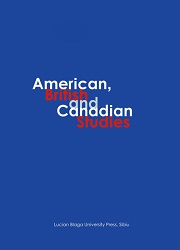The Translatability of Poetry: Phonaesthesia, Sound Iconicity, Orchestration, and Aesthetic Function. A Case Study of Poe’s The Raven
The Translatability of Poetry: Phonaesthesia, Sound Iconicity, Orchestration, and Aesthetic Function. A Case Study of Poe’s The Raven
Author(s): Maria-Teodora CreangăSubject(s): Aesthetics, Translation Studies, Theory of Literature, American Literature
Published by: Editura Universitatii LUCIAN BLAGA din Sibiu
Keywords: phonaestheme; phonaesthesia; sound iconicity; onomatopoeia; orchestration; alliteration; prosody; rhythmic patterns; (un)translatability;
Summary/Abstract: When asked whether all texts are translatable, Roman Jakobson answered: “yes, to a certain extent” (qtd. in Hatim and Munday 16). Poetry in particular is notoriously difficult to translate due to its complexity and intricacies of form and meaning, on the one hand, and its cultural features, on the other. Over the years, poetry translation has been the key topic in many studies and articles that pinpoint concrete issues that may assist the translator during the three main stages of the translation process: source text analysis, linguistic transfer, and target text assessment. The present article tackles the issue of the translatability of Edgar Allan Poe’s The Raven into Romanian in terms of sound symbolism and orchestration with reference to Emil Gulian’s and Dan Botta’s translations. It also investigates the extent to which a particular case of sound symbolism known in the literature as phonaesthesia is a cross linguistic phenomenon and the ways in which it may become a tool in the translation process, given the complexity of the phonological structure of the poem.
Journal: American, British and Canadian Studies
- Issue Year: 2022
- Issue No: 38
- Page Range: 163-168
- Page Count: 16
- Language: English
- Content File-PDF

